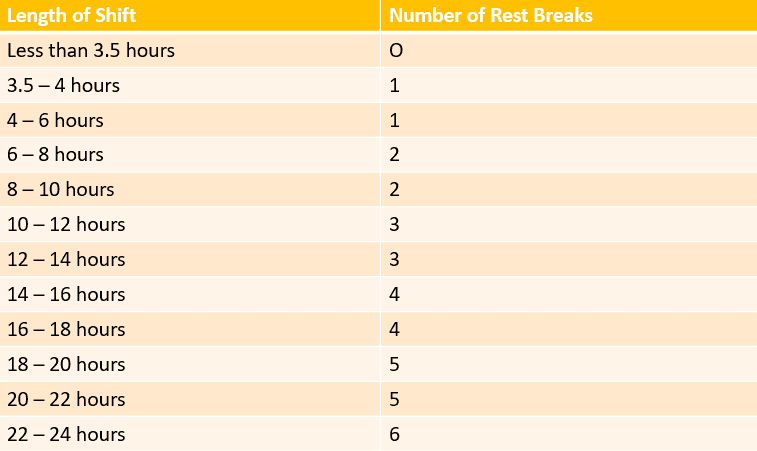California meal period laws can be confusing to many, especially when they are changing every year. Employees used to take meal breaks after 6 hours, but that has since changed to 5 hours after Labor Code Section 512 passed. In addition to Labor Code Section 512, California cities also have their own regulations. With multiple laws in place, it’s incredibly important that employers speak with their local labor boards. This will help ensure that employees are following meal break laws correctly. If employers don’t comply with laws, they may receive penalties and might have to pay employees back in the future.
What is a “meal period”?
A meal period is considered a true meal period if the employee is relieved of all work duties. If an employee works during their 30-minute meal period, the meal period is considered “on duty”. Employers must compensate any employee at their regular rate of pay if they are “on duty” during a break. Additionally, if any employer fails to provide a break period that complies with the IWC Order, they must compensate the employee. This extra hour of pay does not count toward overtime calculations.
An employer can let employees work “on duty” during meal period only under certain circumstances. This happens only if an employee is in a position where it is difficult to find a break time. Under this situation, the employer must pay for the meal period. Of course, this is permitted only with a written agreement between the employee and employer.
If an employer requires employees to stay at the facility or work site during a meal period, the meal period must be paid. This even applies if the employee is relieved of all work duties during the meal period.
Meal Period Breakdown
Employees must receive a meal period if they work over 5 hours along with a 10-minute rest break beak for every 4 hours of work. According to the State of California Department of Industrial Relations, “an employer may not employ an employee for a work period of more than five hours per day without providing the employee with a meal period of not less than thirty minutes.” This means that an employee must take a 30 minute break before the end of the 5th hour.
If an employee works 6 hours or less, the 30-minute meal period can be waived by mutual consent between the employee and employer. That’s right! This means that you can work through your lunch break, but only with this rule. A lunch waiver only applies if the employee works less than 6 hours. If the employee works even 1 minute over, the waived lunch is not valid.
A second meal period (30 minutes or more) is required if an employee works more than ten hours per day, except if the total hours worked is more than 12 hours. Once the employee works more than 12 hours in a shift, they get double time pay. The employee can waive this second meal period with written consent between the employee and employer.
If an employee is in the motion picture industry, they may work no more than 6 hours without a meal period. This meal period must not be less than 30 minutes and no more than one hour.
To break it down, here’s what rest and meal breaks should look like:


Ensuring Employees are Taking Their Breaks
It’s hard to determine whether employees take their breaks, especially when employees are off-site. According to a study by OfficeTeam, 29% of employees work during lunch breaks. This stems from a “work hard” mentality. Employees feel as though they have so much work to do and are afraid that they will look like slackers if they take a break, so they work through lunch. Even though this might seem like a good idea to employers and employees, this is not good. Employees need to take breaks not only for the sake of the law, but also for their mental health. A survey by essity finds that North American workers who take a lunch break every day show higher engagement and job satisfaction. Break time is very beneficial for the growth of the business.
When it comes to implementing breaks in CA , employers are not required to ensure that no work is performed. In other words, it’s up to the employee to actually take the break without working. CA law states that “an employer must actually relieve employees of all duty, relinquish control over their activities, permit them a reasonable opportunity to take an uninterrupted 30-minute break… and must not impede or discourage employees from taking their meal period.” Employers must not undermine company policy or force employees to work through meal periods. If employers do not comply with the law, they will have to compensate employees accordingly.
What’s next?
Employers should invest in a time tracking system in which employees can log their break times. When time is properly recorded, it’s easier to tell whether or not employees are actually taking their breaks. When it comes to tracking time, it’s important that employers find a system that follows their regulations properly. Timesheets.com, for example, is a flexible system that allows employers to adjust break settings based on their needs. With customizable settings, employers ensure that employees are taking breaks within a specific time frame. Next, employers should also consider creating a lunch break policy. A lunch break policy will ensure that employees follow protocol and employers stay compliant with local laws.





